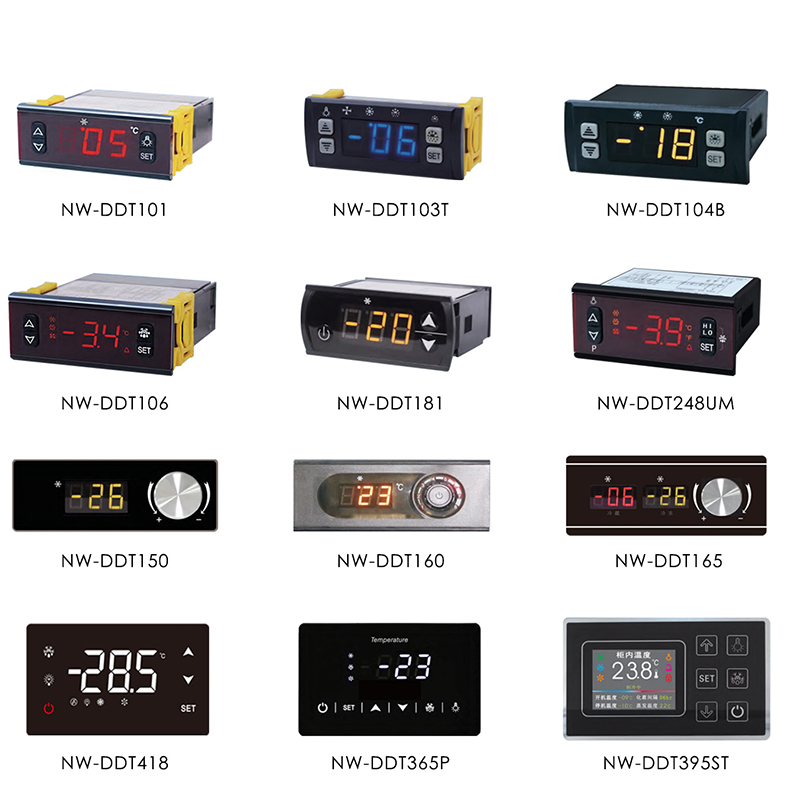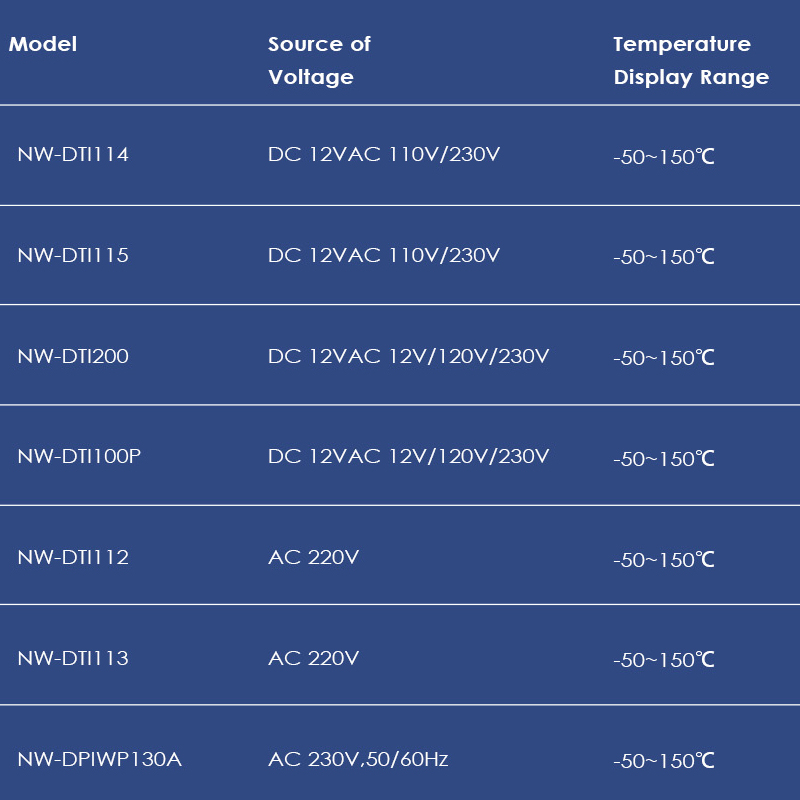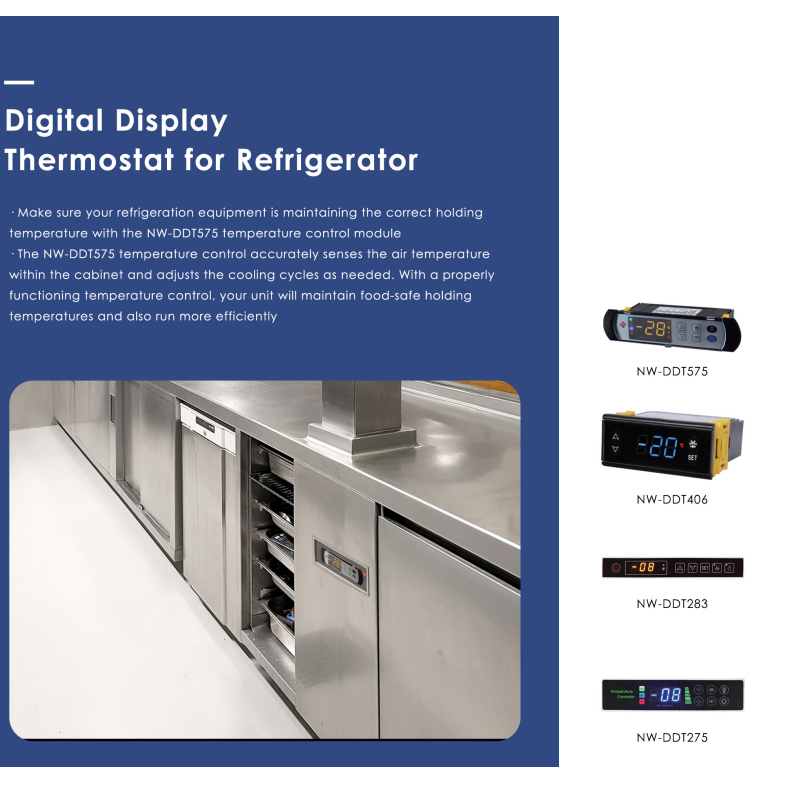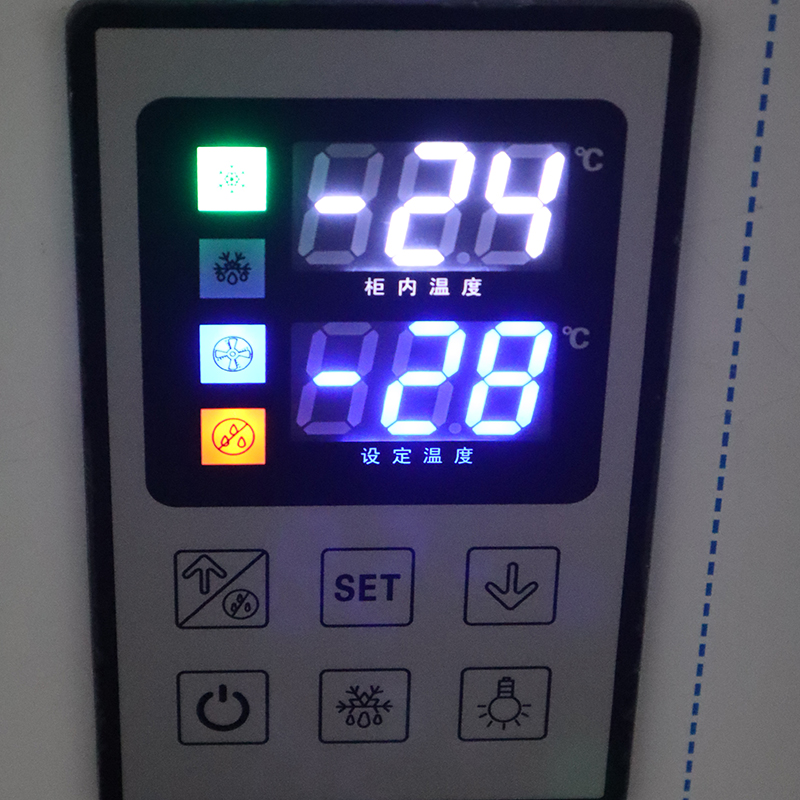A digital display is an electronic device used to visually display values such as temperature and humidity. Its core function is to convert physical quantities detected by temperature sensors (such as changes in resistance and voltage caused by temperature changes) into recognizable digital signals, and present them in digital form through a display screen (such as LED, LCD, etc.).
It usually consists of several key components: the temperature sensor is responsible for collecting temperature information of the environment or objects; the signal processing circuit amplifies, filters, etc. the signals transmitted from the sensor; the analog – to – digital converter converts analog signals into digital signals; finally, the display screen outputs the specific temperature value. Some products may also include control buttons for switching units (such as Celsius and Fahrenheit) or setting alarm thresholds.
Nenwell states that digital displays are widely used in various scenarios such as households (e.g., indoor thermometers), industrial production (e.g., equipment temperature monitoring), medical (e.g., thermometers), refrigerators, and beverage display cabinets. Compared with traditional pointer thermometers, they have characteristics such as intuitive reading, higher accuracy, and fast response speed.
When choosing a digital temperature display for refrigeration equipment such as a refrigerator, the following key techniques can be used for a simple judgment:
1.Clarity
Give priority to choosing those with large numbers and moderate brightness to avoid being dazzled by strong light or being unable to see clearly in dim light, especially suitable for the elderly.
2.Display information
Basic models need to display the real – time temperatures of the refrigerator compartment and the freezer compartment; advanced models can focus on whether there is additional information such as set temperature, mode (such as quick – cooling/quick – freezing), and fault prompts, and choose according to needs.
3.Operational convenience
Check whether the positions of the display and adjustment buttons are convenient, and whether the button feedback is clear to avoid misoperation, especially suitable for scenarios where the temperature is frequently adjusted.
4.Stability
Give priority to choosing original brand – matched or third – party accessories with a good reputation to reduce problems such as inaccurate temperature display and screen flickering, and ensure the reliable operation of the refrigerator.
In short, the main principles are clear readability, practical information, convenient operation, and stable durability. You can focus on the needs of the usage scenario. Of course, there are many types and appearances to choose from, and different beautiful styles can be customized.
If it is applied to supermarket beverage freezers, such digital displays can be customized in batches. The key is to focus on the brand, otherwise, there may be excessive errors. For example, if the error exceeds 1%, it is unqualified. You can refer to the detailed values.
In 2025, some new models will also be launched. For example, the temperature is displayed through a large – screen touch. This kind is expensive and has a high cost. If it is only used for temperature display, increasing efficiency and reducing costs is a more worthy choice.
Post time: Jul-23-2025 Views:




